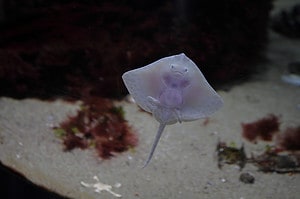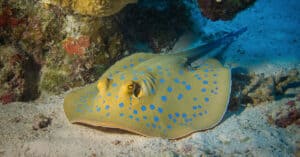Stingrays are a type of fish renowned for their flat, flowing bodies and long tails with venomous stingers. They are simultaneously beautiful and a little frightening since their stinger exceeds the length of their bodies. One might think they would use the stinger to hunt their prey, but that is not the case. We’ll help you get to the bottom of the question, what do stingrays eat?
You might be surprised at what these cousins of the shark consume to keep themselves well-fed. We’ll also show you how their diet changes in captivity and discuss whether they are dangerous to human beings.
What Foods Do Stingrays Eat?
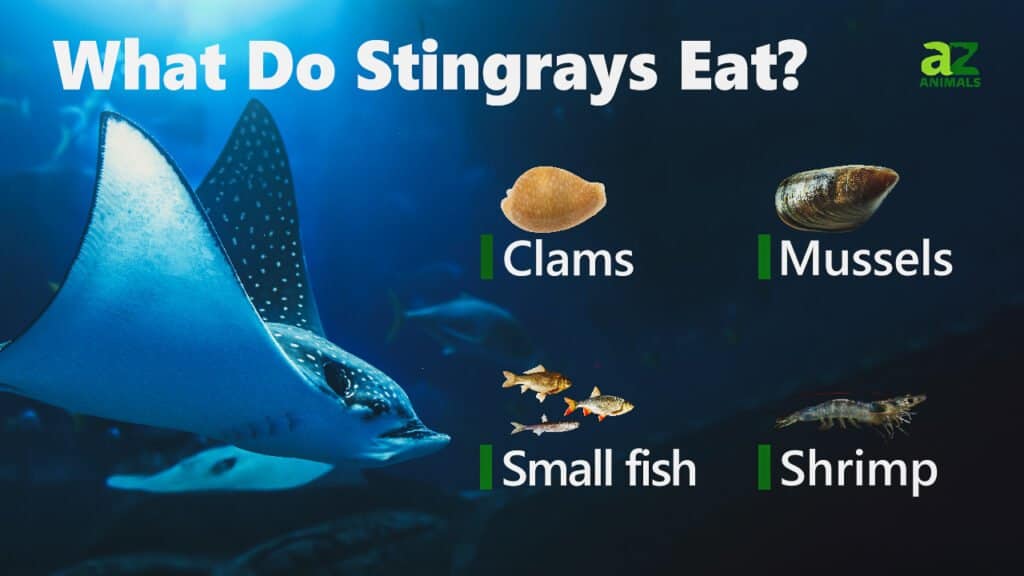
Stingrays eat fish, mollusks, crustaceans, and invertebrates. These cartilaginous fish are pure carnivores, feeding on a variety of other animals beneath the ocean waves. The selection of foods available to them makes it easy for stingrays to fulfill their dietary needs.
Stingrays eat a wide array of foods, including:
- Crabs
- Shrimp
- Squid
- Mantis shrimp
- Wrasse fish
- Gobiidae
- Clams
- Mussels
- Oysters
- Scallops
- Cuttlefish
- Snails
- Worms
- Prawns
- Seahorses
These fish prefer to consume many smaller meals throughout the day instead of eating large meals less often.
Younger stingrays are developed internally and nourished by a yolk sac. Once the yolk sac is spent, they receive a nutrient-rich substance secreted by the mother’s uterus called histotrophe until they are birthed. After that, the stingrays proceed to consume smaller creatures from the aforementioned list of foods.
How Do Stingrays Hunt?
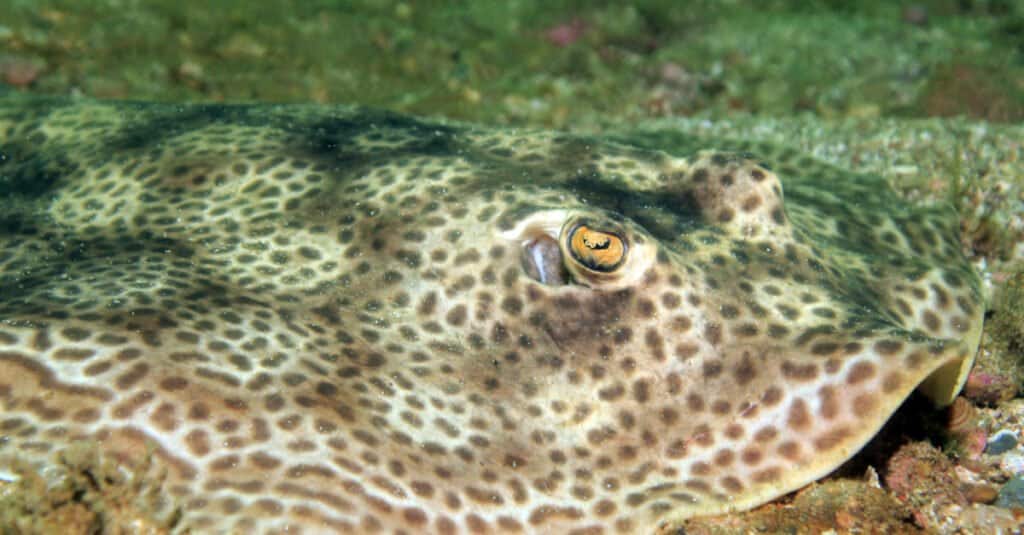
Stingrays use their ampullae of Lorenzini to find prey on the sea floor.
©Daniel Lamborn/Shutterstock.com
Although it’s easy to imagine a stingray spearing other fish and consuming them, that’s not the way that they find or eat food. Instead, they are ambush predators with a bit of a twist. Unlike other hunters in the deep waters, stingrays do not use their eyes for the majority of their hunting.
In fact, that would be very difficult since their eyes are on the top of their body and their mouths and gills are located on the bottom.
Like sharks, stingrays can sense changes in electrical fields that are caused by creatures living in the water. These organs, called ampullae of Lorenzini, are arranged around the stingray’s mouth, and they allow a stingray to sense when prey is nearby.
Their hunting behavior takes advantage of their ability to find others. Stingrays are bottom feeders, scanning the seafloor for food instead of rising to the top. Once they have located a suitable meal, the stingray will eat it outright or perform a process called tenting.
Tenting is when the stingray presses its pectoral fins to the bottom of the underwater surface, trapping the prey. Once they have set the trap, stingrays lift their heads and generate suction that pulls their prey into their mouths where they chew and shred them.
Stingrays use their powerful jaws to crack mollusk shells and quickly finish off their prey.
What Do Stingrays Eat in Captivity?
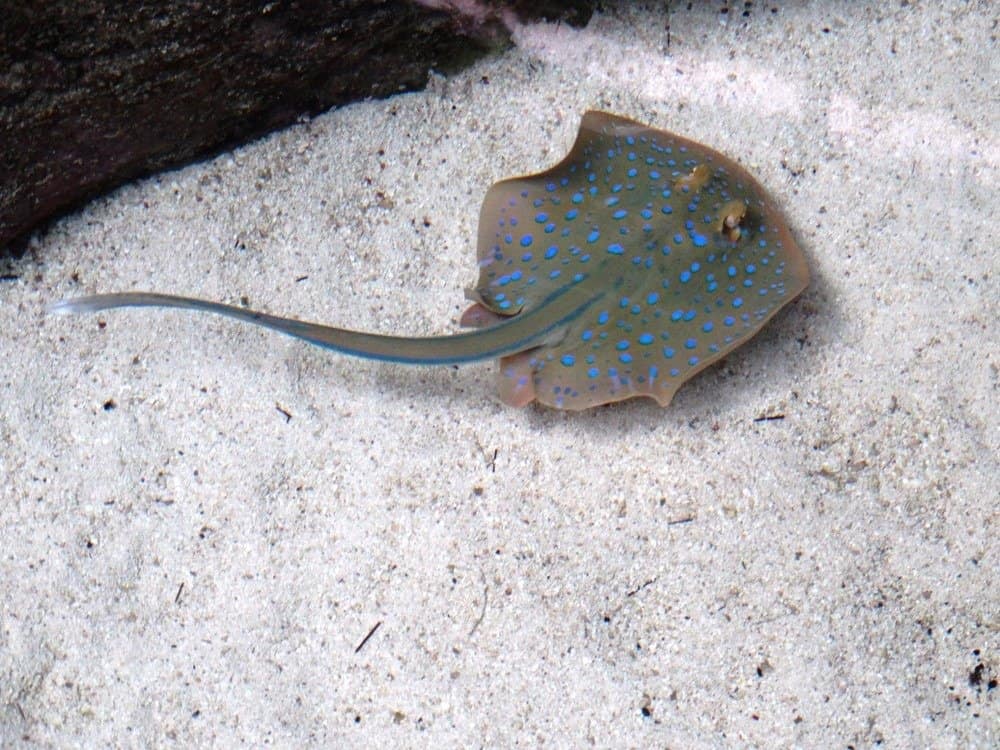
Stingrays eat earthworms, blackworms, and frozen shrimp in captivity.
©Charles B. Cardell/Shutterstock.com
The interesting looks and locomotion of stingrays have made them a popular attraction at aquariums. However, it’s not possible or entirely ethical for the caretakers to maintain the stingray’s diet. Thus, the foods they eat in captivity are notably different from the ones they eat while in the wild.
For example, common meals for captive stingrays include:
- Live shrimp
- Earthworms
- Blackworms
- Frozen bloodworms
- Frozen Mysis shrimp
- Nutrition gels
These foods provide much of the dietary requirements for stingrays, and the nutrition gels make up the difference where necessary. Most often, these diets are utilized in public aquariums rather than personal ones; stingrays do not make for good pets.
Are Stingrays Dangerous to Humans?
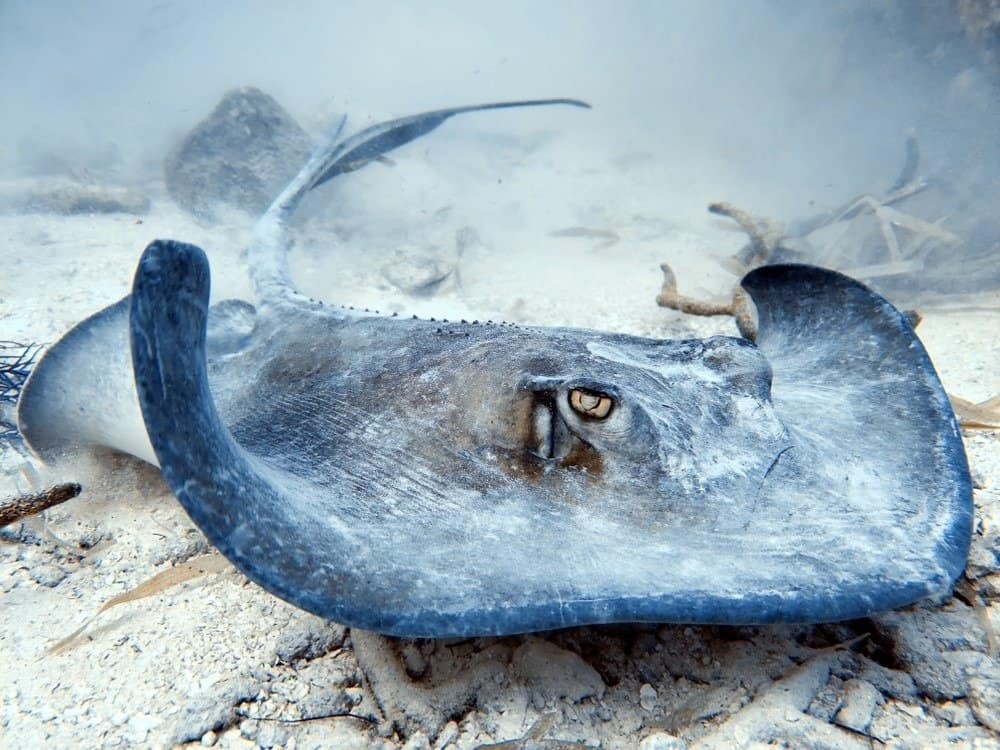
Stingrays can be dangerous, but they are not aggressive if you leave them alone.
©Nate Madden/Shutterstock.com
The stingray does not look like the type of creature that humans should interact with. They look positively dangerous with their long, barbed tail. However, like most wild animals, the last thing that a stingray wants to do is actively engage a human being in a fight.
In the vast majority of cases, stingrays will flee from human beings that try to touch them. They want to escape potential danger because their predators are so fierce. Stingrays will not hunt people down in the water.
That being said, stingrays can be dangerous to human beings under certain conditions. If a person steps on a stingray in the water by accident, then there is a chance the fish will act defensively by using the stinger’s barbs against the person. Several recorded cases of accidental interactions between humans and stingrays exist.
The other condition occurs when a human antagonizes or scares a stingray, as was the case with Steve Irwin. It is believed that the stingray likely thought Irwin’s shadow belonged to a tiger shark. In a desperate attempt to fend off a predator, it struck him in the chest.
Of course, freak accidents will happen where a leaping ray kills a boater, but those cases are extraordinarily rare.
The bottom line is that stingrays are not coming after you in the water, and the best thing you can do is give them distance and learn to shuffle your feet in waters with rays instead of stomping down.
What Predators Hunt Stingrays?
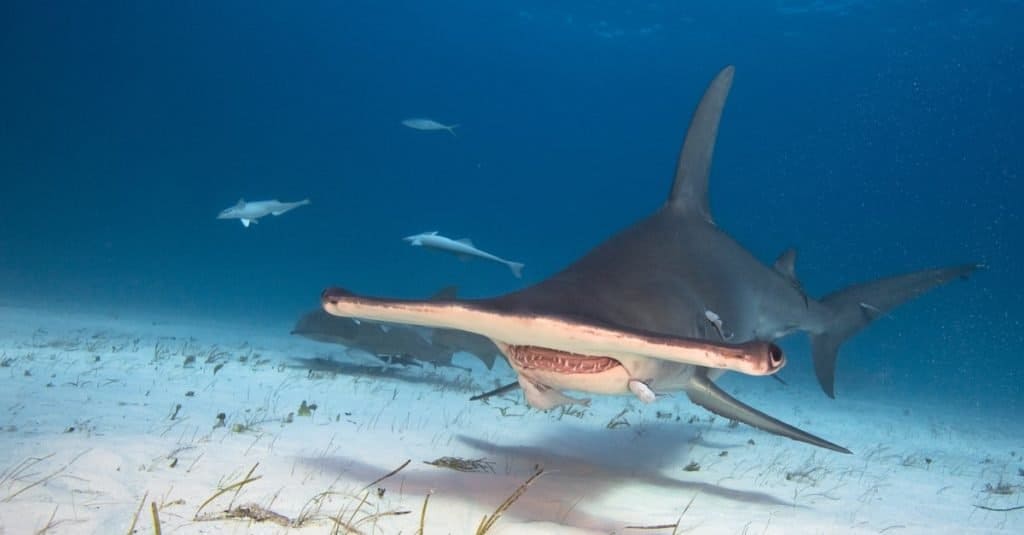
Great Hammerhead sharks
are highly capable of hunting stingrays.
©frantisekhojdysz/Shutterstock.com
Although stingrays have a rather potent defensive measure in their barbed tails, they cannot turn away all predators. Some enemies are too fast, too large, or so much more aggressive that the stingray does not stand a chance.
Some of the predators that stingrays have to deal with include:
- Lemon sharks
- Hammerhead sharks
- Seals
- Sea lions
- Dolphins
- Large, carnivorous fish
- Humans
Their massive tails and venom aren’t the only thing stingrays have going for them in terms of defenses, though. They can also lie flat on the seafloor and hide from their enemies, though this trick is harder to perform against sharks that have the ampullae of Lorenzini.
Stingrays are carnivorous fish that are closely related to the shark despite sharing very few of their characteristics. They are not aggressive, and they rarely pose a threat to humans without the human doing something to them.
These fish prefer to feed on bottom-dwelling sea creatures like mollusks, crabs, and shrimp, but their diet is quite diverse, and it becomes narrower when a stingray lives in captivity.
The photo featured at the top of this post is © scott plume/Shutterstock.com
Thank you for reading! Have some feedback for us? Contact the AZ Animals editorial team.



